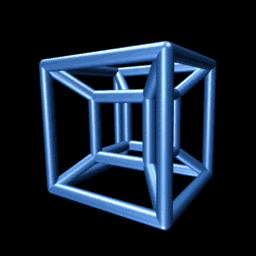BZOJ4350: 括号序列再战猪猪侠
Description
括号序列与猪猪侠又大战了起来。
众所周知,括号序列是一个只有(和)组成的序列,我们称一个括号
序列S合法,当且仅当:
1.( )是一个合法的括号序列。
2.若A是合法的括号序列,则(A)是合法的括号序列。
3.若A,B是合法的括号序列,则AB是合法的括号序列。
我们考虑match[i]表示从左往右数第i个左括号所对应的是第几个右
括号,现在他得到了一个长度为2n的括号序列,给了你m个信息,第i
个信息形如ai,bi,表示match[ai]<match[bi],要你还原这个序列。
但是你发现这个猪猪侠告诉你的信息,可能有多个括号序列合法;甚
至有可能告诉你一个不存在合法括号序列的信息!
你最近学了取模运算,你想知道答案对998244353(7*17*2^23+1)取
模的结果,这个模数是一个质数。
Input
第一行一个正整数T,T< = 5,表示数据组数。
对于每组数据,第一行一个n,m,n表示有几个左括号,m表示信息数。
接下来m行,每行两个数ai,bi,1< = ai,bi< = n。
Output
对于每组数据,输出一个数表示答案。
Sample Input
5
1 0
5 0
3 2
1 2
2 3
3 2
2 1
2 3
3 3
1 2
2 3
3 1
1 0
5 0
3 2
1 2
2 3
3 2
2 1
2 3
3 3
1 2
2 3
3 1
Sample Output
1
42
1
2
0
42
1
2
0
HINT
对于前两个点,是卡特兰数的情况。
对于第三个点,合法的情况只可能是 ()()()。
对于第四个点,合法情况可能是 (()()) 或者 (())()
对于第五个点,由于拓扑关系形成了环,显然无解。
对于 100% 的数据,保证 n < = 300
设f[l][r]表示第l个括号到第r个括号的匹配方案。
考虑l的右括号应在哪里,有两种转移:
1.(.....)型:若区间[l+1,r]中没有任何一条诸如match[i]<match[l]的条件,则f[l][r]=f[l+1][r]。
2.(...)...型:枚举分割位置p,类似判断条件,转移为f[l][r]+=f[l+1][p]*f[p+1][r]。
为了O(1)完成判断,我们其实是在询问一个矩形内有没有点,用前缀和判判即可。

#include<cstdio> #include<cctype> #include<queue> #include<cmath> #include<bitset> #include<cstring> #include<algorithm> #define rep(i,s,t) for(int i=s;i<=t;i++) #define dwn(i,s,t) for(int i=s;i>=t;i--) #define ren for(int i=first[x];i;i=next[i]) using namespace std; inline int read() { int x=0,f=1;char c=getchar(); for(;!isdigit(c);c=getchar()) if(c=='-') f=-1; for(;isdigit(c);c=getchar()) x=x*10+c-'0'; return x*f; } typedef long long ll; const int maxn=310; const int mod=998244353; int f[maxn][maxn],A[maxn][maxn]; int check(int x1,int x2,int y1,int y2) { return A[x2][y2]-A[x1-1][y2]-A[x2][y1-1]+A[x1-1][y1-1]; } int dp(int l,int r) { int& ans=f[l][r]; if(ans>=0) return ans; if(l>=r) return ans=1;ans=0; if(!check(l+1,r,l,l)) ans=dp(l+1,r); rep(i,l,r-1) if(!check(l+1,i,l,l)&&!check(l,l,i+1,r)&&!check(l+1,i,i+1,r)) { (ans+=((ll)dp(l+1,i)*dp(i+1,r))%mod)%=mod; } return ans; } int main() { dwn(T,read(),1) { memset(f,-1,sizeof(f)); memset(A,0,sizeof(A)); int n=read(),m=read(); while(m--) { int a=read(),b=read(); A[b][a]=1;if(a==b) f[1][n]=0; } rep(i,1,n) rep(j,1,n) A[i][j]+=A[i][j-1]+A[i-1][j]-A[i-1][j-1]; printf("%d\n",dp(1,n)); } return 0; }




